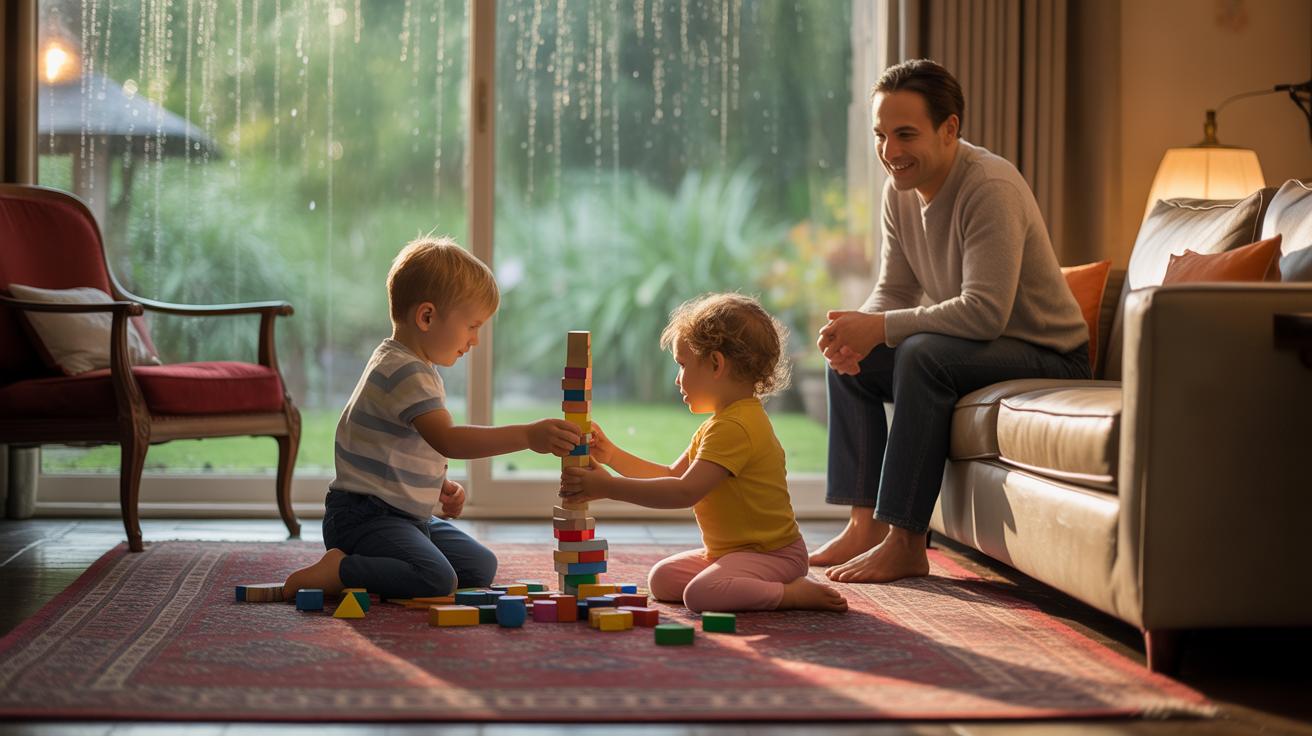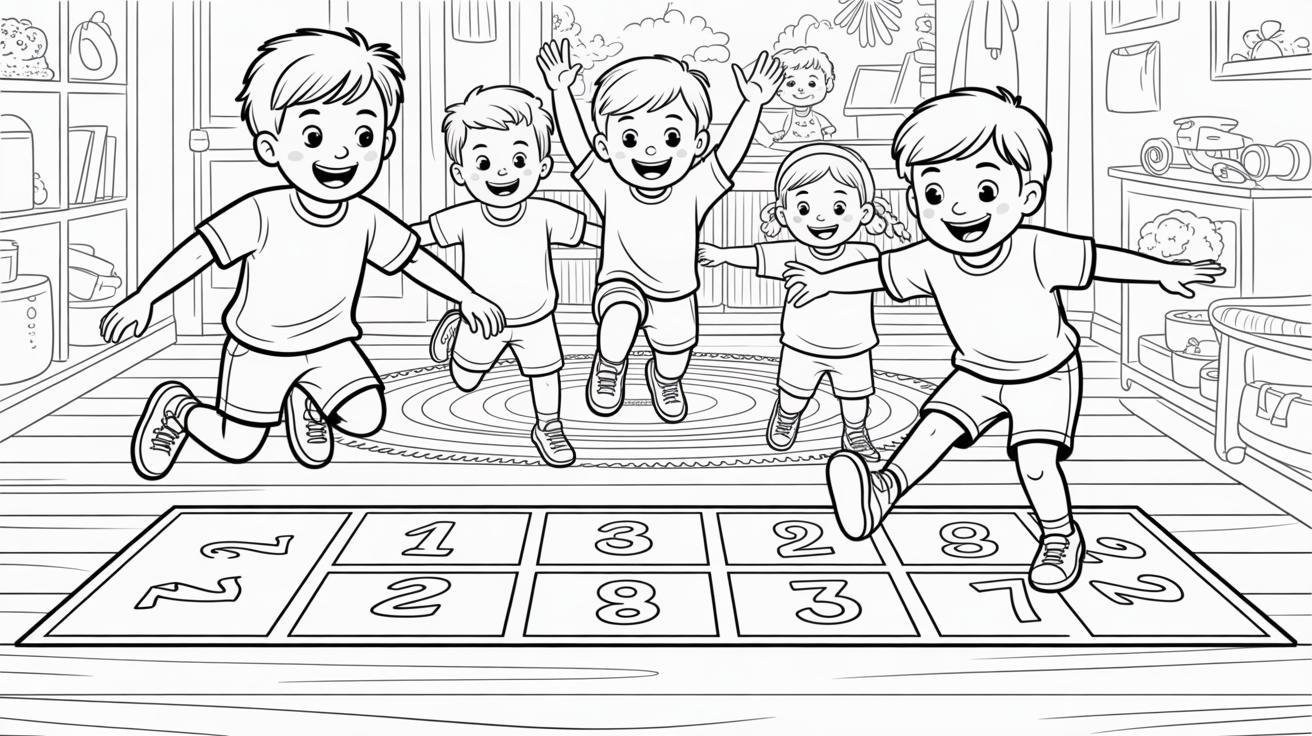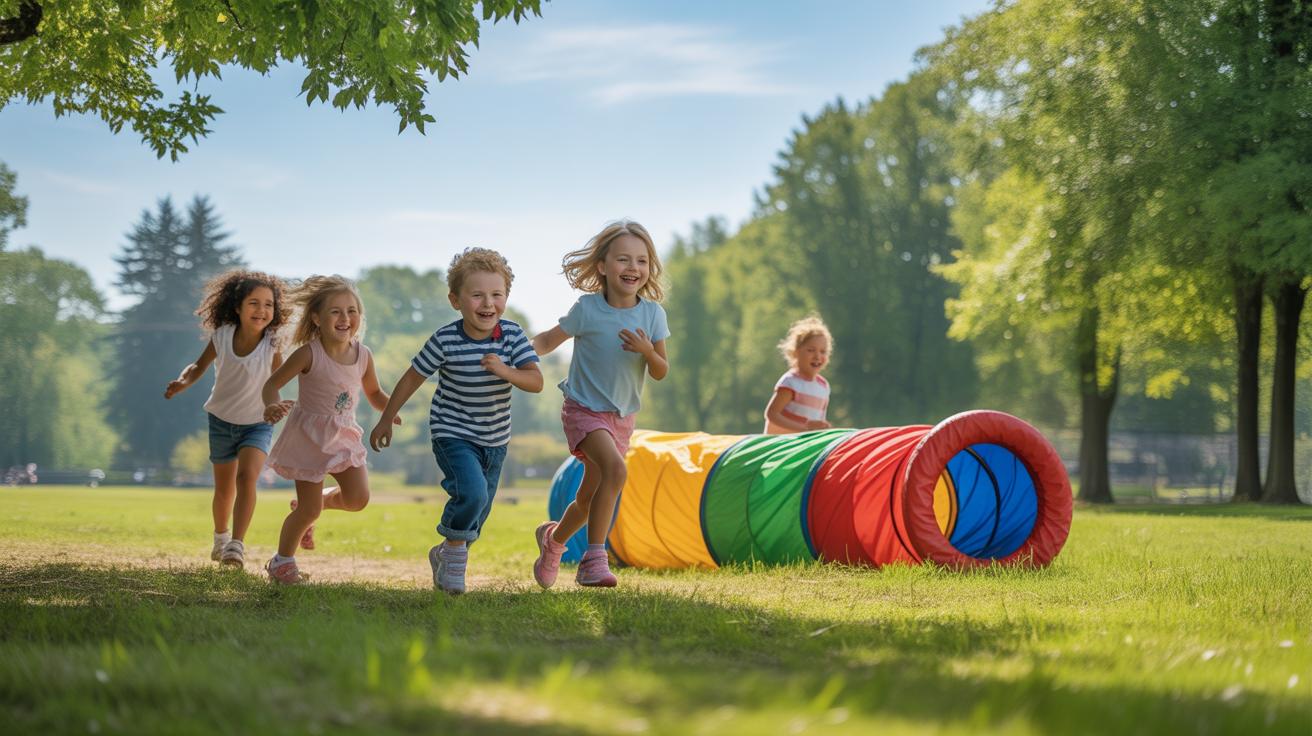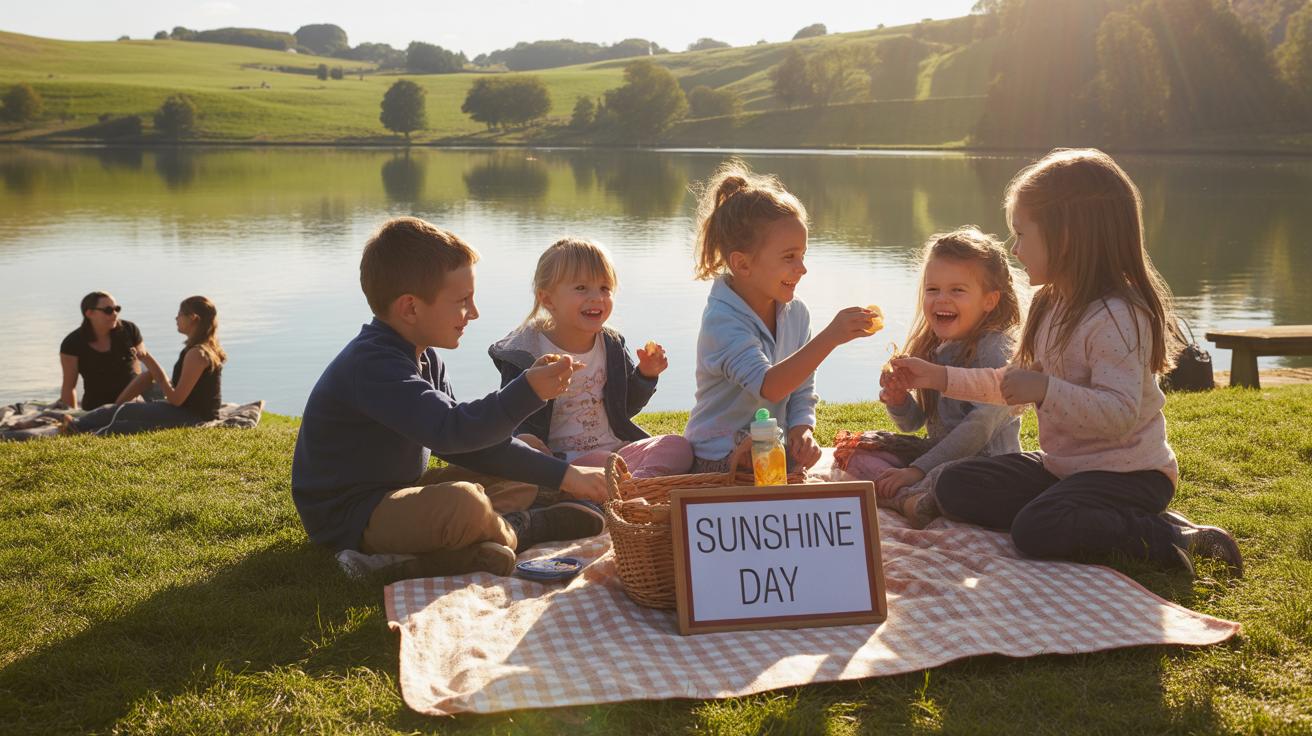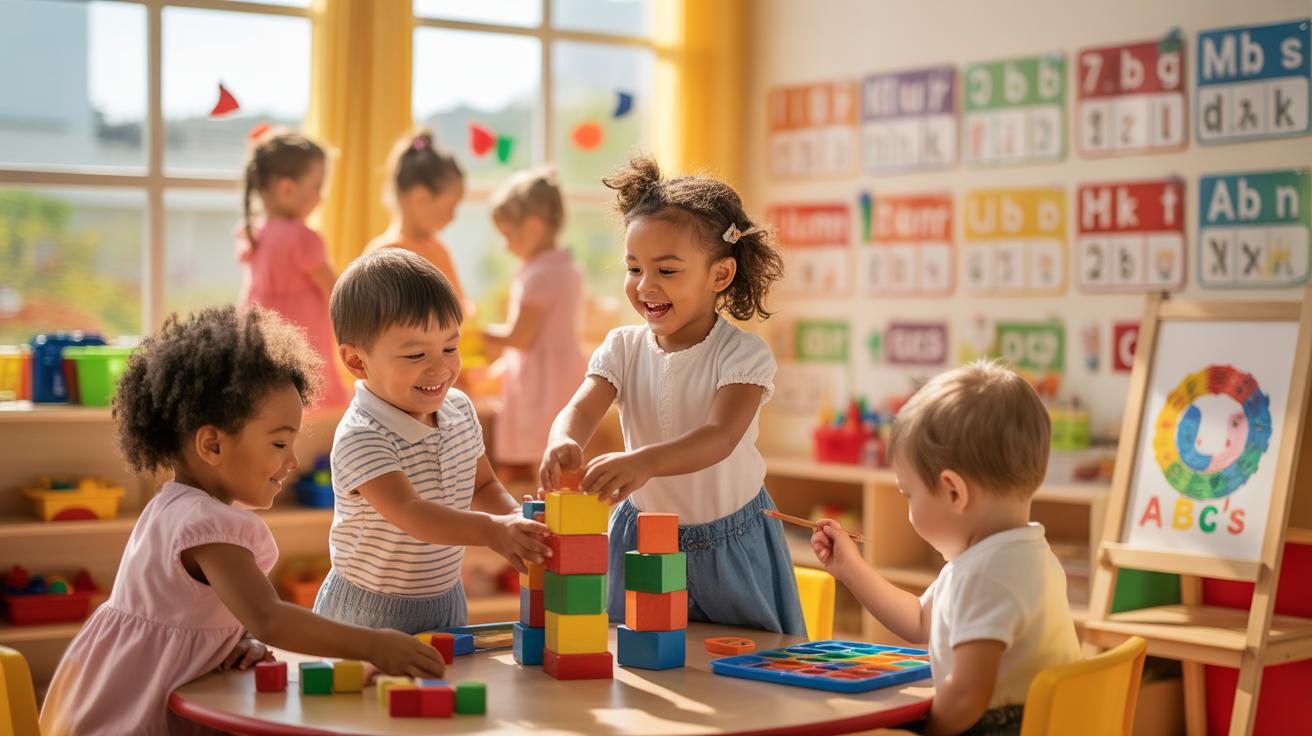Introduction
Finding ways to keep kids active indoors can be a challenge, especially on rainy days when outdoor play is not an option. Keeping your child’s energy levels balanced is important to help them stay healthy and happy. Indoor activities that combine creativity and physical movement can offer the perfect solution.
In this article, you will discover a range of indoor activities designed to help maintain your children’s energy while encouraging learning and play. These activities are easy to set up, require minimal materials, and suit children of various ages.
Set up a KidZania Role Play Experience at Home
You can turn a corner of your home into a mini KidZania, where your child becomes the boss of their own little world. Start by choosing a few real-world jobs—like a firefighter, chef, doctor, or store clerk—and gather simple props to match. Maybe aprons for a chef, a toy phone for a receptionist, even a clipboard for a teacher. Let your child wear these or hold them while acting out the tasks.
Kids love moving around while pretending. Setting up different “stations” in the living room or hallway encourages walking, bending, maybe even some jumping as they switch roles or handle “emergencies.” It’s active play disguised as fun, which keeps their energy in check without feeling like exercise. Plus, that mix of imagination and movement strengthens their problem-solving and social skills. They become engaged physically and mentally, which is rare indoors.
Creating a Mini City for Your Child
Making a little city inside your home isn’t as hard as it sounds. Use boxes, chairs, cushions, and even tape to outline streets or buildings. Cardboard boxes can turn into cars or shops. A table can serve as a grocery store counter. Anything that can be arranged to form different “places” sparks curiosity.
Kids can play roles like cashier, postman, mechanic, or even a news reporter. Each role comes with little tasks: sorting mail, fixing a toy car, or delivering messages. The key is to keep things simple but open-ended. This way, kids direct their own play and keep moving from job to job, pretending and exploring as they go.
Benefits of Role Play for Energy and Learning
When kids take on real-world jobs through role play, their energy finds a useful outlet. Instead of bouncing off walls, they channel their restlessness into actions that require focus and imagination. For example, “working” at a pretend hospital can involve walking around, checking supplies, talking to “patients,” all while thinking through what to do next.
This kind of play reduces boredom far better than passive activities because it mixes mental challenges with physical movement. It’s not just burning off energy—it’s also building skills like communication, empathy, and decision-making. The balance between physical and mental engagement is what keeps children interested longer and better manages their natural energy.
Crafting and DIY Projects That Move the Body
When you think of crafting, sitting still probably comes to mind first. But what if the process itself got kids moving? Building forts out of cushions and blankets, for example, pushes children to bend, crawl, and climb as they construct their own little hideouts. It’s not just about creating something cool—it’s about the physical work involved along the way.
Obstacle courses made from household items can double as crafty setups. Kids might tape together paper tunnels or create jumping stations with colorful tape on the floor. These projects encourage them to move in diverse ways—jumping, stretching, ducking—which breaks up the monotony of sitting and boosts engagement.
Scavenger hunts tied to arts and crafts also get children on their feet. Searching for craft materials hidden around the house demands reaching into corners or stooping down low, which balances out stationary crafting moments nicely. Plus, there’s something about the thrill of discovery that fuels their energy.
Some activities worth trying include:
- Building a cardboard castle that requires climbing in and out.
- Creating a paper chain linked to a scavenger hunt, where each found item adds a link.
- Designing and setting up mini obstacle courses with craft supplies, alternating between focused handiwork and active movement.
By combining crafting with movement, kids get the chance to express creativity while managing their energy. It’s a simple shift from just sitting down to making the craft part of a bigger, more active experience. What crafting projects have you seen (or tried) that get kids moving unexpectedly? Sometimes the best ideas come from just letting children guide the process.
Interactive Games That Get Kids Moving
Interactive games that encourage movement indoors can really help balance kids’ energy, especially on those long rainy days. Think about simple activities like dance parties where kids put on their favorite songs and just move however they want. It’s spontaneous, but also a good way to release restless energy—and surprisingly hard to sit still through. Balloon volleyball is another fun option. You just need a balloon and some space, and the rules are simple: no hitting the balloon twice in a row, and keep it from touching the floor. It’s a great way to get kids jumping and stretching without worrying about breaking things.
Indoor hopscotch can be made with tape on the floor. It’s easy to set up and kids enjoy the challenge of balancing and hopping in different patterns. Plus, it’s flexible—you can change the shape or length depending on space and how energetic the kids feel.
Dance and Movement Games
Dance games like “Freeze Dance” or “Follow-the-Leader” keep children entertained and physically active. The idea is simple but effective: play music and have kids imitate movements or freeze when the music stops. They get creative, and it almost doesn’t feel like exercise. My own kids often invent little twists, adding silly moves or unexpected pauses, which keeps things fresh and lively. These games use energy but don’t require much space or equipment, which is handy when you’re indoors.
Indoor Sports Adapted for Small Spaces
Traditional sports can be tweaked to fit smaller indoor areas. For example, try a mini soccer game using a soft ball and goals marked with furniture or tape. Or adapt basketball by using a laundry basket as the hoop. The trick is lowering the stakes so kids focus on fun, not competition, and to keep safety in mind—slippery floors or fragile objects can be an issue. Sometimes the challenge is figuring out how to keep the essence of the sport without the usual space or gear. But I think that’s part of the fun: creativity within limits tends to bring out new ways to move and play.
Educational Activities That Encourage Active Learning
Trying to make learning active isn’t always straightforward, but it can work surprisingly well when you mix in some movement. Kids tend to lose interest quickly if they have to sit still too long, so games that invite them to jump or hop while thinking make a big difference. For example, a spelling bee can become way more engaging if kids have to do a silly dance or stretch between each letter. It breaks up the monotony while keeping their minds sharp.
Pairing physical activity with learning keeps the energy flowing and the brain engaged, which matters, especially on those long indoor days when everyone’s restless. You could spread out a hopscotch grid with numbers and have kids solve addition problems, hopping to the answer instead of just writing it down. It’s a subtle shift but somehow more memorable.
Subjects that work well with movement include math, spelling, and even geography. Try calling out states and asking kids to jump to a spot representing each one on a taped map, or have them roll a ball and answer a question when they catch it. There’s a balance between staying focused and burning energy—and this approach hits that point reasonably well.
Quiet Time Activities That Help Energy Recovery
After a burst of active play indoors, kids often need moments to unwind, yet it’s tricky—too much rest too soon can feel frustrating for them. Quiet activities that involve gentle creativity or calm focus can really help their energy settle without making them feel restless or bored.
Calming Crafts and Art
Simple crafts like folding paper, making collages, or coloring inside the lines may seem basic but they actually do a good job at soothing buzzing energy. These activities give kids something tangible to focus on, allowing their minds to slow down naturally. I remember my niece getting completely absorbed in just connecting dots or choosing colors. It’s almost like a mini reset button.
- Try coloring books with broad, simple shapes to avoid frustration.
- Set up a small craft station with supplies like glue sticks, large beads, or soft chalk pastels.
- Encourage drawing feelings—a quick sketch of what they’re thinking or how they feel can ease mental clutter.
Guided Relaxation and Story Time
Story time isn’t just about fun tales. It gives kids a chance to pause physically and mentally. Reading aloud, especially with expressive voices, can draw children into a calmer state without forcing silence.
Guided mindfulness exercises—like breathing deeply or picturing a quiet place—might sound too advanced but kids often respond surprisingly well, if kept short and playful. These moments can stabilize their mood and prepare them to jump back into activity later.
- Pick stories with gentle themes rather than action-packed plots right after active play.
- Use a fixed phrase to start relaxation, such as “Let’s take three deep breaths before we read.”
- Try a simple body scan, asking kids to notice if their hands or feet feel warm or cool.
Balance in activity is subtle. Sometimes quiet time doesn’t look completely still, but these calming indoor activities consistently help kids recover and regain focus—at a pace that feels natural rather than forced.
Organizing Indoor Playdates That Combine Fun and Activity
Planning an indoor playdate that keeps kids moving while having a good time can be a bit tricky. You want to strike a balance between activity and fun without the chaos becoming unmanageable. One way to do this is by setting up stations for different games—some active, some a bit calmer. For example, a space for a simple scavenger hunt paired with a place for crafts lets children shift gears when they need to.
In my experience, involving the kids in choosing the games helps keep everyone engaged, though sometimes it leads to more energetic bursts than planned. Setting clear, simple rules before the playdate starts also makes a difference. You might be surprised how kids respond when they know when it’s time to run and when to settle down.
Group Games for Social Engagement
Group games that encourage teamwork and some physical movement fit well indoors. Games like “Simon Says” or “Musical Chairs” can get kids moving but still require them to listen and cooperate. Activities involving passing a ball or building something together also promote social skills without needing too much space.
Some games need little props—a balloon for a keep-it-up contest or a soft ball for relay races. The key is choosing ones that naturally encourage sharing and taking turns. Of course, sometimes the group just doesn’t cooperate perfectly, but that’s part of the process too.
Managing Energy Levels in Group Settings
Keeping kids happy during playdates often means watching their energy ebbs and flows. Too much nonstop activity can lead to crankiness, while too little can cause boredom. Introducing a rhythm of active bursts followed by quieter moments, like storytime or building blocks, tends to work well.
You might find that some kids need more downtime than others, so having a cozy nook or calm corner can help those who want a break. Also, watching for signs of restlessness and gently redirecting energy to the next game or activity can prevent meltdowns. It’s a bit of trial and error, but patience usually pays off in a playdate that’s both lively and balanced.
Using Technology to Promote Active Indoor Play
Active Video Games and Apps
You might be surprised how some video games actually get kids moving rather than glued to the screen. Games designed for motion sensors or dance pads, like certain dance or sports titles, can encourage kids to jump, stretch, and twist. These aren’t just distractions; they can be part of a play routine that keeps children physically engaged indoors. Fitness apps made for kids often combine fun challenges with movement prompts—think jumping jacks or balancing exercises disguised as game levels. Some families I know even turn these sessions into friendly competitions, which seems to boost motivation. Still, not every tech-based activity demands high intensity; sometimes gentle, guided movements through an app provide just the right kind of active break.
Setting Limits for Balanced Screen Time
Balancing screen time feels tricky—especially when technology offers so many fun ways to move. It helps to think of tech-based play as one piece of a bigger puzzle. You don’t want kids to spend too long in front of a screen, even if it’s an active game. Setting clear, consistent limits lets children enjoy digital movement but also leaves room for playing with toys, reading, or just wandering around. Maybe you decide on a timer or switch activities every 20-30 minutes. It can actually feel better for everyone when tech time has a boundary—less zoning out, more fresh energy. Isn’t it interesting how these limits can make screen time feel special rather than routine?
Building a Routine That Mixes Activity and Rest
Creating a daily rhythm indoors isn’t always easy, especially when kids seem full of endless energy one minute and suddenly listless the next. But a predictable schedule that blends play, learning, and rest can really help keep things smoother. You might find that your child thrives when active times are balanced with quieter moments—it’s not just about filling hours but about how those hours flow.
Try crafting a flexible plan that alternates bursts of movement—like dancing or obstacle courses—with calm activities such as reading or puzzle time. Even short breaks with deep breaths or stretching can reset their focus. It may feel like trial and error at first to see what works best. Sometimes kids resist routines, but introducing them gently often pays off.
Watch for signs that your child needs a pause: sudden irritability, yawning, or losing interest quickly can mean they’re hitting a wall. Don’t dismiss these clues—they’re usually pretty clear if you pay attention. Remember, rest doesn’t always mean stopping completely; it can be slower, quieter play that still feels engaging.
In the end, a balanced schedule isn’t a rigid timetable but a guide that helps children expend energy without burning out while also giving parents some peace of mind. Have you noticed your child respond differently to structured versus free-flowing days? There’s no one-size-fits-all, but mixing it up thoughtfully often helps everyone get through rainy indoor days with fewer tantrums and more smiles.
Making the Most of Limited Indoor Space
When space is tight, keeping kids active indoors can feel tricky. You want movement, but without rearranging the whole living room or ending up buried under toys. The key might be in choosing activities that don’t demand sprawling areas but still get energy flowing.
Think about simple setups, like a mini obstacle course using pillows and chairs, or an indoor hopscotch drawn with tape on the floor. These don’t need much room and children can move around without bumping into things. Stretching exercises or dance sessions to favorite songs also fit nicely in small corners, and they can be just as fun.
Keeping the play area organized helps a lot. A small basket or a box for toys can prevent clutter—and makes it easier to clear space quickly when the kids want to switch activities. Sometimes, though, I find that limiting options actually encourages creativity; fewer toys can mean more imagination in how to play.
Ask yourself: can you designate a spot that’s easy to clear out? Maybe a fold-away mat or a small carpet works. It’s less about perfect order, more about having a space that feels open enough to move, but contained enough to avoid chaos or accidents.
Conclusions
Indoor activities can provide an excellent way to keep your children engaged and active when outdoor play isn’t possible. By choosing activities that mix creativity and movement, you help your child balance their energy and stay healthy. Each activity offers a chance for your child to learn new skills while having fun.
Your role in facilitating these activities is key. Try to create a routine that includes both active play and quiet time. This balance supports your child’s overall well-being and development, especially on days when they must stay indoors.


